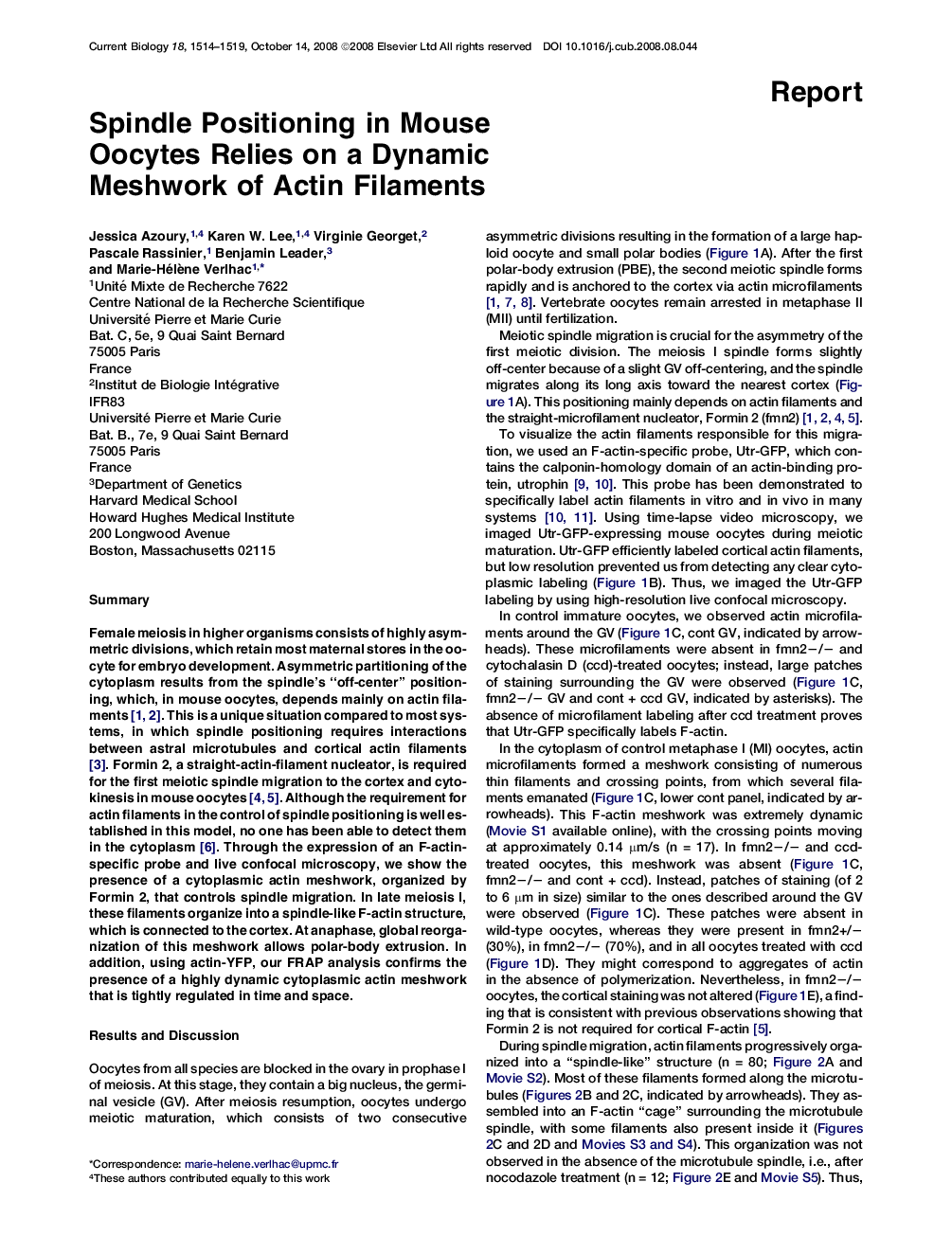| Article ID | Journal | Published Year | Pages | File Type |
|---|---|---|---|---|
| 2043773 | Current Biology | 2008 | 6 Pages |
SummaryFemale meiosis in higher organisms consists of highly asymmetric divisions, which retain most maternal stores in the oocyte for embryo development. Asymmetric partitioning of the cytoplasm results from the spindle's “off-center” positioning, which, in mouse oocytes, depends mainly on actin filaments 1 and 2. This is a unique situation compared to most systems, in which spindle positioning requires interactions between astral microtubules and cortical actin filaments [3]. Formin 2, a straight-actin-filament nucleator, is required for the first meiotic spindle migration to the cortex and cytokinesis in mouse oocytes 4 and 5. Although the requirement for actin filaments in the control of spindle positioning is well established in this model, no one has been able to detect them in the cytoplasm [6]. Through the expression of an F-actin-specific probe and live confocal microscopy, we show the presence of a cytoplasmic actin meshwork, organized by Formin 2, that controls spindle migration. In late meiosis I, these filaments organize into a spindle-like F-actin structure, which is connected to the cortex. At anaphase, global reorganization of this meshwork allows polar-body extrusion. In addition, using actin-YFP, our FRAP analysis confirms the presence of a highly dynamic cytoplasmic actin meshwork that is tightly regulated in time and space.
